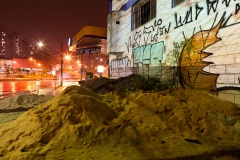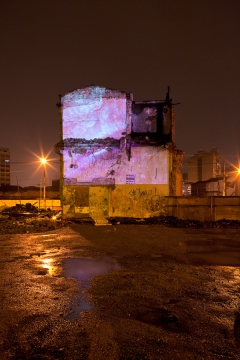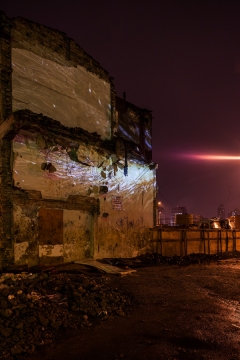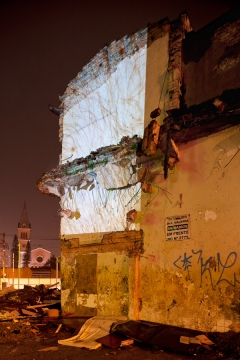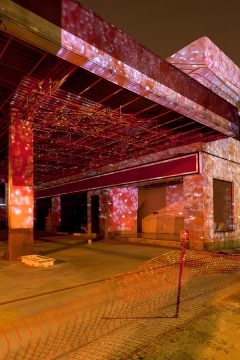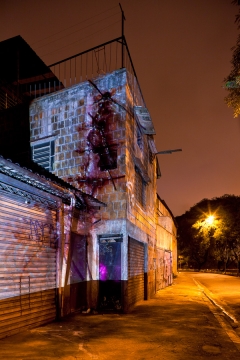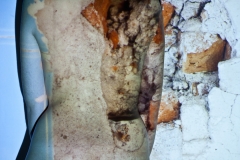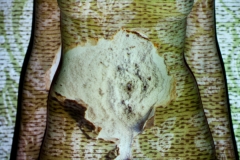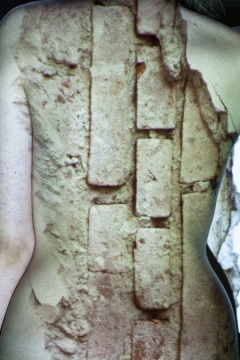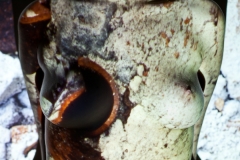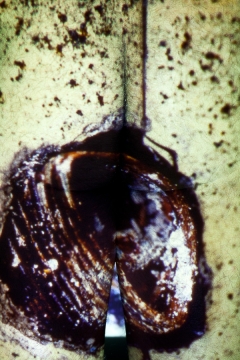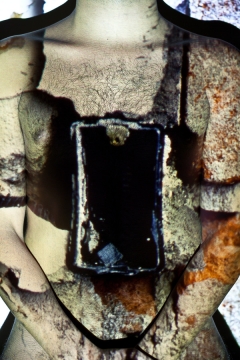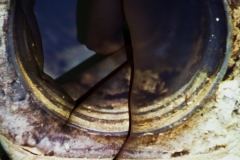In memory of my grandmothers Giuliana and Marina,
still living,
they cannot remember their names.
I believe that this work has arisen from my grandmothers’ veins, swollen in skin by time. And despite not having had the courage to photograph them, I still see their presence. Perhaps I should have photographed them and also their homes, thus making a fusion between the memories of their bodies and their locations. Perhaps it would have been too literal. To speak of the passage of time and memory, in the human bodies and in the constructed ones, I could also create stories that did not exist, crossing people and places that do not know each other; I remember a professor commenting on the opening of fiction films: "all stories are based on real facts.”
But beyond my grandmothers’ veins, I could have mentioned the tartar on my teeth, the mycoses on our feet, the veins popped in noses or penis, the sparse hair that grow and then become dense (or those which are still sparse), and the ones that fall from the body, to join the others on the floor; a crack on the wall of the living room, the moldy ceilings of the bathrooms, the dogs’ fat that adhered to the wall, the handprints around the bed. I could also have spoken of the screw that tore the wall, exposing its inside, or the pipe that burst out, causing uncontrollable water gushing that destroyed the tiles and the thinset around them. They are wounds, scars, grouts, molds, cement, bricks, blood, hair.
Speaking of the intimacy in architecture or an architecture of intimacy, is speaking of a memory that inhabits the body and a memory that inhabits architecture itself; an architecture as dirty as man, with his intimacies, soul, desires, problems - and matter, which degrades. Of the human in architecture, but not as a standard of measurement, not as a functional human, nor of an architecture with more adequate forms towards man and his nature, but of a human that bothers, even more when viewed up close.
